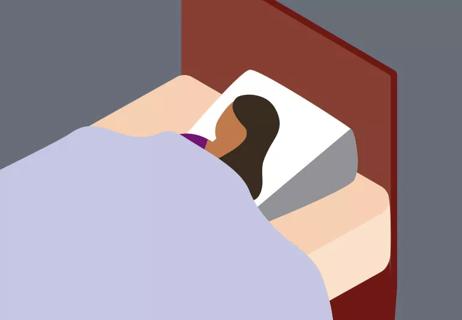What’s on your plate, like lean chicken vs. fatty beef, may determine whether you deal with post-meal acid reflux

If you’ve ever had acid reflux, you know how uncomfortable it can be. There’s nothing pleasant about stomach acid gurgling out of your tummy and burning a wrong-way path up your esophagus.
Advertisement
Cleveland Clinic is a non-profit academic medical center. Advertising on our site helps support our mission. We do not endorse non-Cleveland Clinic products or services. Policy
The good news? Ongoing acid reflux, or gastroesophageal reflux disease (GERD), can often be managed through food choices, says registered dietitian Beth Czerwony, RD, LD.
While there isn’t a defined GERD diet, there’s no question that certain foods may trigger acid reflux. Here’s what grub might punch your ticket to Heartburn City, and what may help keep your gut happy.
Your digestive system is designed to keep the contents of your belly from flowing back up. But some foods can undermine the gatekeeping valve (the lower esophageal sphincter) that separates your esophagus and stomach.
If that valve relaxes, acid and other digestive goop can creep up into your esophagus. This can kickstart GERD symptoms like heartburn, nausea and a sour taste in your mouth.
It’s best to avoid the following foods if you have GERD.
Fatty foods are much harder to digest. As this chewed-up chow lingers in a growing pool of stomach acid, it tends to loosen up that valve to your esophagus and light the match for heartburn.
High-fat foods that can contribute to GERD include:
“So, you eat your wings or fries or greasy burger, and then it just sits in your stomach turning and churning in all that acid,” illustrates Czerwony. “Eventually, your stomach valve relaxes and things start working their way back up.”
Advertisement
Remember talking about the pH scale back in science class? It’s a way to measure the acidity of a substance. The lower the score, the higher the acidic value.
Consuming food and drinks that lean toward the acidic side can irritate your esophagus and disturb that all-important stomach valve — two factors that can bring on GERD symptoms, explains Czerwony.
Acidic food can also increase stomach acid production, which can worsen GERD.
Acidic foods to limit if you have GERD include:
Capsaicin, a natural compound that brings the heat to spicy food, slows digestion once it hits your belly to put added pressure on your stomach valve. Flame-throwing food may also irritate your esophagus to increase heartburn.
In addition, many spicy dishes include acidic foods — like tomatoes and onions — that can double your trouble.
Other items in your kitchen that could fuel GERD include:
Czerwony suggests building meals around these options to keep heartburn from flaring.
Advertisement
It’s not just what you eat that can bring heartburn and other GERD symptoms. Here are some others to manage how your gut feels after a meal.
Czerwony also recommends keeping a journal to track what foods kickstart your acid reflux.
“A food that’s a problem for one person may not be for you. It’s very individualized,” clarifies Czerwony. “Connect the dots between your heartburn and what you ate before it. If a certain food gives you problems, you know to avoid it.”
Advertisement
Learn more about our editorial process.
Advertisement

While all three are different, they’re also closely related

For some lucky people, these pillows can eliminate the need for medications or surgery

Lifestyle changes such as diet and weight loss or medication such as antacids can bring relief

This color additive, found in many pre-packaged foods, may affect people with ADHD or allergies

Eating too much salt can put extra pressure on your blood vessels and heart

Tart cherry juice contains natural compounds that may support better sleep

This fruit has clear nutritional benefits — but there’s little evidence it can prevent or treat illness

Great sources of this essential mineral include potatoes, squash, lentils and avocados

The ‘sunshine vitamin’ is found naturally in some fish and is added to other foods

Autism and ADHD often go hand in hand, giving rise to the term AuDHD

The Yuzpe regimen is less effective than other forms of emergency contraceptives, and it’s associated with more side effects